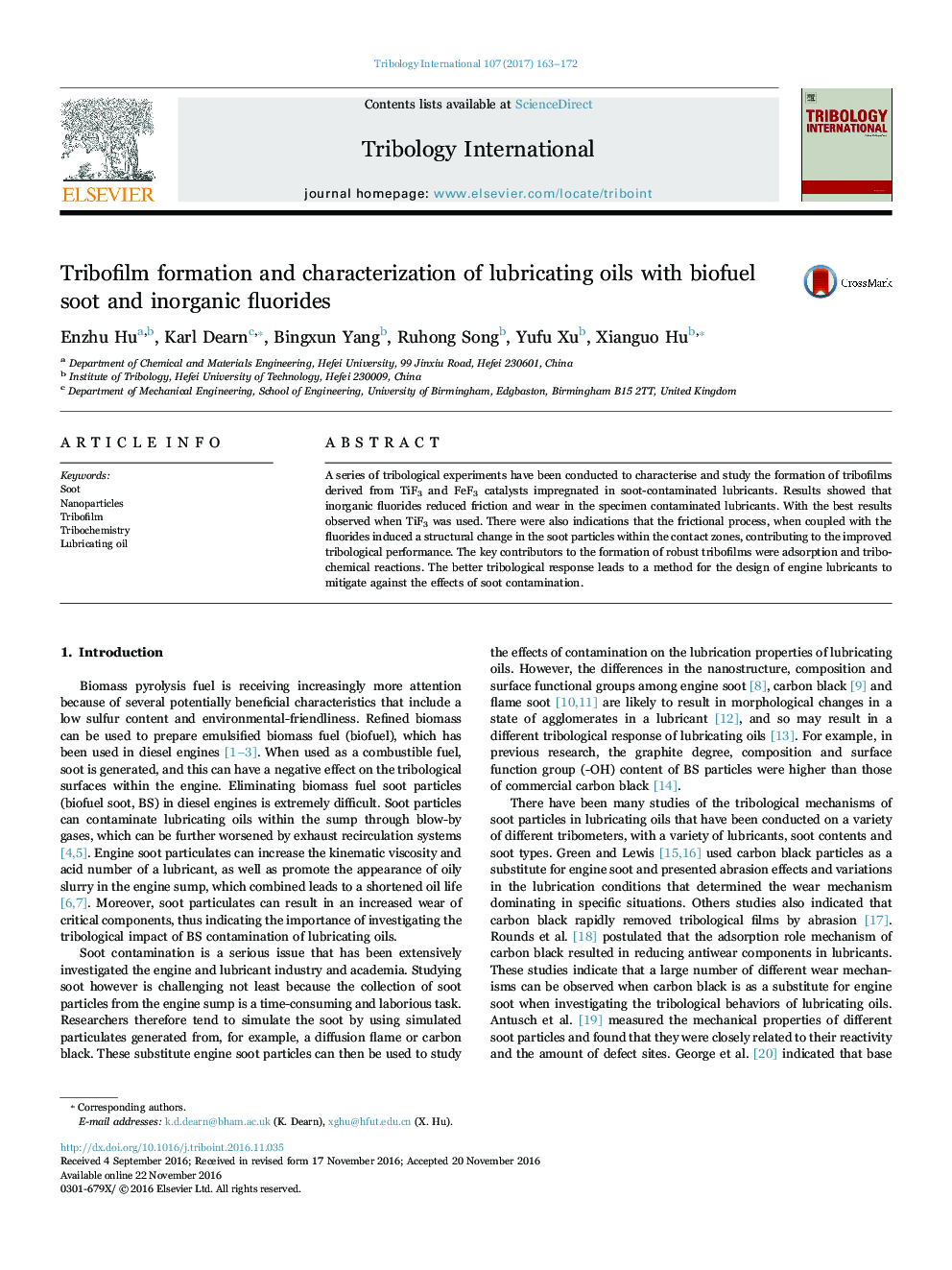| Article ID | Journal | Published Year | Pages | File Type |
|---|---|---|---|---|
| 4986223 | Tribology International | 2017 | 10 Pages |
Abstract
A series of tribological experiments have been conducted to characterise and study the formation of tribofilms derived from TiF3 and FeF3 catalysts impregnated in soot-contaminated lubricants. Results showed that inorganic fluorides reduced friction and wear in the specimen contaminated lubricants. With the best results observed when TiF3 was used. There were also indications that the frictional process, when coupled with the fluorides induced a structural change in the soot particles within the contact zones, contributing to the improved tribological performance. The key contributors to the formation of robust tribofilms were adsorption and tribo-chemical reactions. The better tribological response leads to a method for the design of engine lubricants to mitigate against the effects of soot contamination.
Related Topics
Physical Sciences and Engineering
Chemical Engineering
Colloid and Surface Chemistry
Authors
Enzhu Hu, Karl Dearn, Bingxun Yang, Ruhong Song, Yufu Xu, Xianguo Hu,
